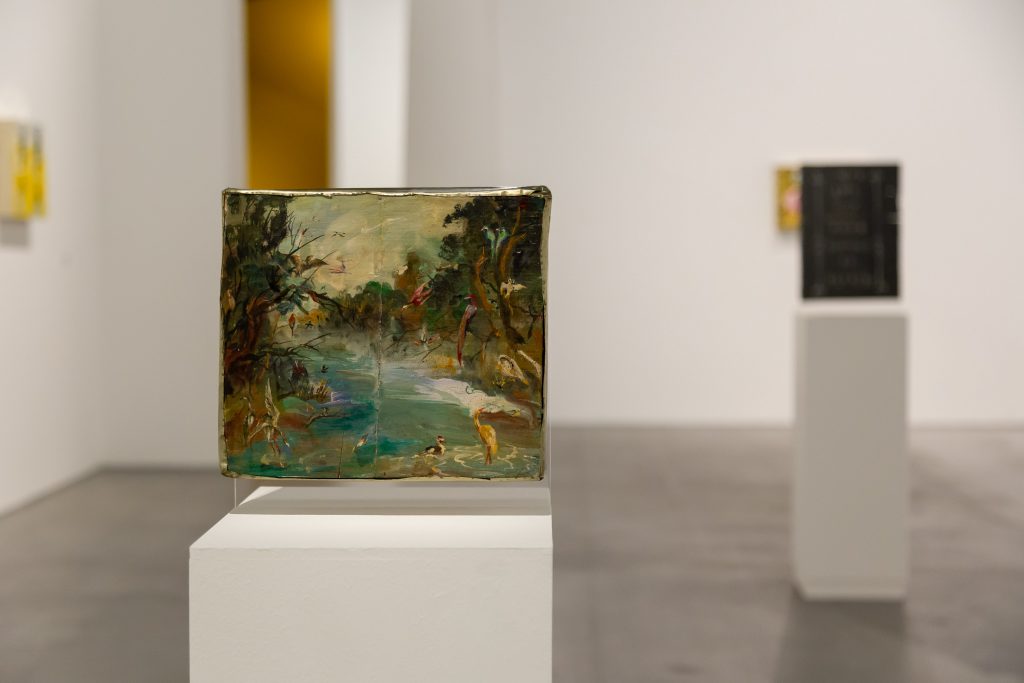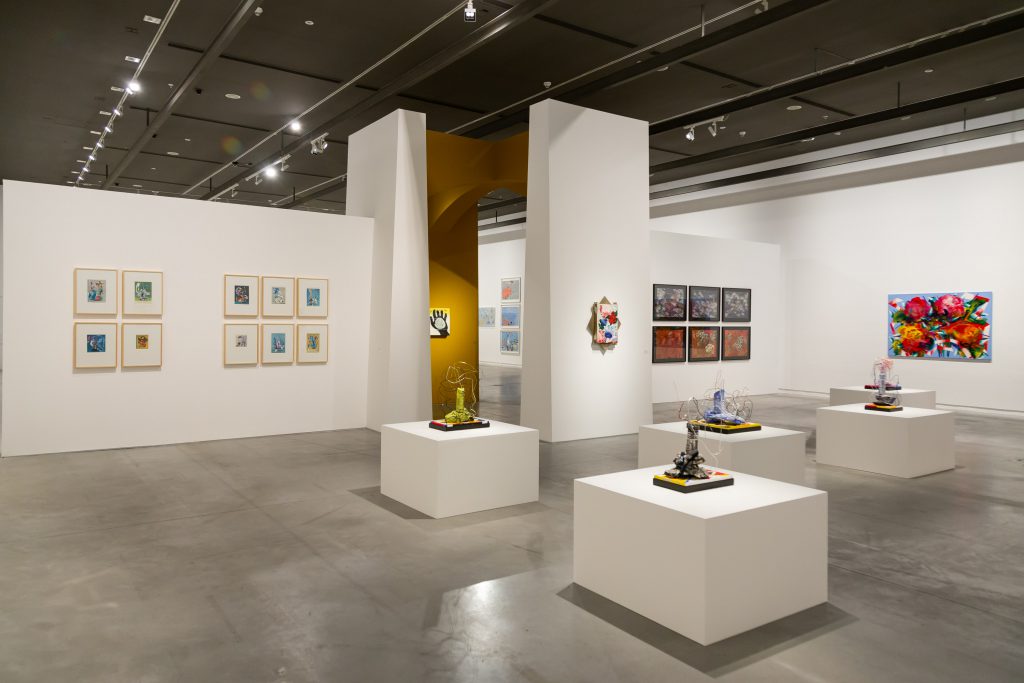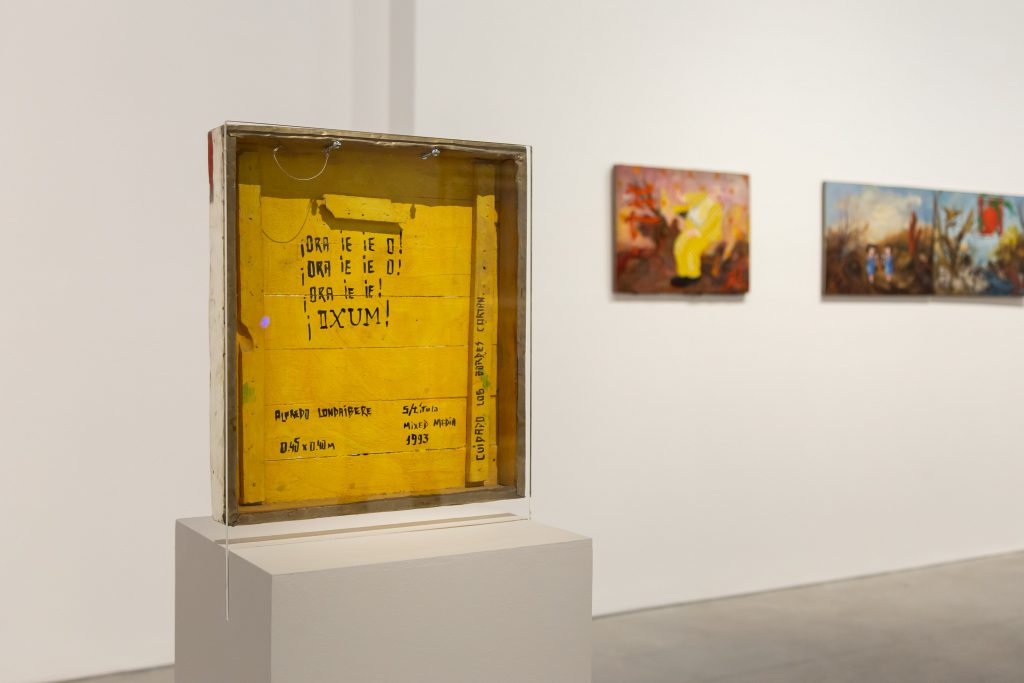Alfredo Londaibere (Buenos Aires, 1955-2017) believed painting could concentrate all an artist’s capacity for expression and all the truth about art. Painting was his language, his economy, and his field of action. He explored it from multiple perspectives in his different roles as an artist, curator and teacher, based on a work system with a guild logic that focused on his craft.
The Museo de Arte Moderno de Buenos Aires presents I am a Saint, the first panoramic exhibition of his work that tells the story of his religious conversion through the images he produced along the way. Religion took on a coded form in his work, becoming embodied in it to then take flight in a flow of consciousness, becoming prayer, thought and invocation. Like a portal, his work became a hinge between two worlds.
His works were a coming together of classic European art, primitive Christianity, baroque colonial painting, pagan, Catholic and Afro-descendant beliefs, central and peripheral modernisms, east and west, the avant garde and local appropriations, the artisan system and the learned arts, elite culture and popular consumption. Painting also gave him a field of research that he explored through diverse techniques and materialities which he used to revisit traditional genres, and which at the same time became a way to reach a spiritual state that became increasingly explicit in his themes, his procedures and his vision of the world. Londaibere ultimately made painting a personal religion and a daily procession.
I am a Saint brings together a broad group of works – many of them for the first time in public – from his surreal first pencil drawings from the 1970s to his last ensembles of paintings and collages made between 2013 and his death. In these works, the immediacy configured a way of making that was meditative and centred on aesthetic enjoyment, appearing to leave behind the hermetic impression of his earlier series. His assemblages, produced with crushed cans, are also present, the beauty of consumption affected by waste and scavenging. These works bring together some of the key visual themes of the 1990s and early 2000s, including the recuperation of “minor” techniques and popular materials in the quest to reinstate their sacredness. Exvotos, syncretic icons and a mix of opaque, deformed gloss, like the alpaca sash that covers his paintings, like popular shrines and trinkets from the neighbourhood of Once, so mysterious and yet there to be unveiled.
Alfredo Londaibere (Buenos Aires, 1955 – 2017)
Londaibere trained in Araceli Vázquez Málaga’s workshop for a large part of the 1970s, studying vision, composition, colour theory, history of art, drawing and painting. In the 1980s, he continued his training for a short time with Oscar Smoje. He produced work systematically, although he barely participated in the circuit of exhibitions and salons of the time. In parallel, he maintained fluid but irregular ties with the Grupo de Acción Gay, with whom he shared readings on social theory, a micropolitical activism and a sociability that brought him into contact with Jorge Gumier Maier and Marcelo Pombo. Towards the end of the decade, he attended the clinics of works by Pablo Suárez, Luis Wells and Kenneth Kemble in the Centro Cultural Ciudad de Buenos Aires (now Centro Cultural Recoleta). Having integrated a little more, he showed his first works in bars and nightclubs such as Cemento and Bolivia. From the foundation of the Centro Cultural Recoleta art gallery, he formed part of the group of artists with ties to the Gumier administration. He presented his first individual exhibition Mapas y pinturas [Maps and Paintings] there in 1989, considering it a “retrospective.” He then exhibited again in 1991, curated by Magdalena Jitrik, and for the last time in 1992.
In 1991, he participated in the first edition of the Kuitca scholarship along with Jitrik, Graciela Hasper, Tulio de Sagastizabal, Daniel García, Daniel Besoytaorube, Sergio Bazán, and others. He received a scholarship from Fundación Antorchas in 1995 to attend the workshop in Barracas, under the direction of Luis Fernando Benedit and Pablo Suárez. He also taught in the plastic arts department at the Central Cultural Ricardo Rojas until his death, and in his workshop where he had numerous students. In 1997, he replaced Gumier Maier as curator of the Rojas until 2002.
He had individual exhibitions at the Mun gallery (1993), Instituto de Cooperación Iberoamericana (1996), Alianza Francesa (1998), Belleza y Felicidad (2000 and 2002), Centro Cultural San Martín (2005), Centro Cultural Recoleta (2009), Jardín oculto (2011) and Galería Nora Fisch (2015), among others.





